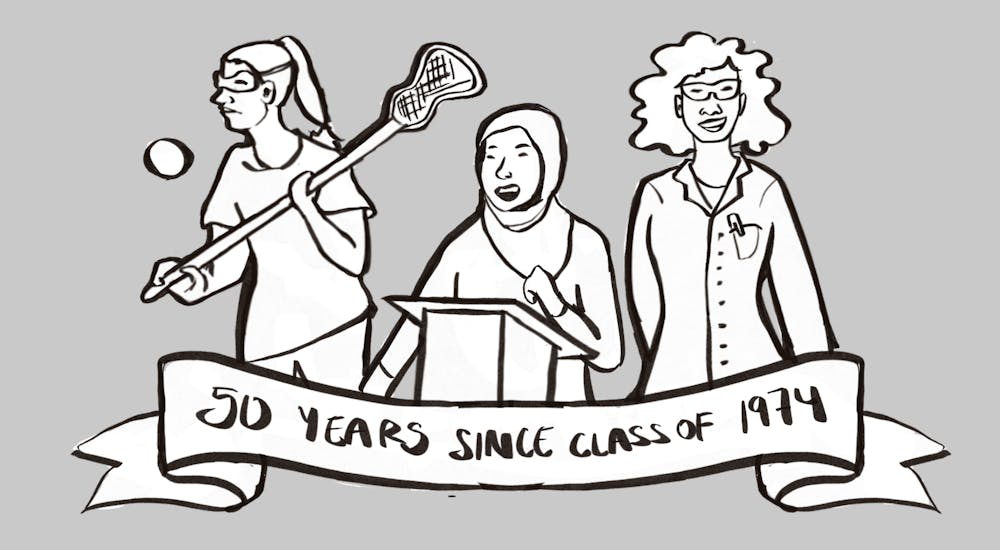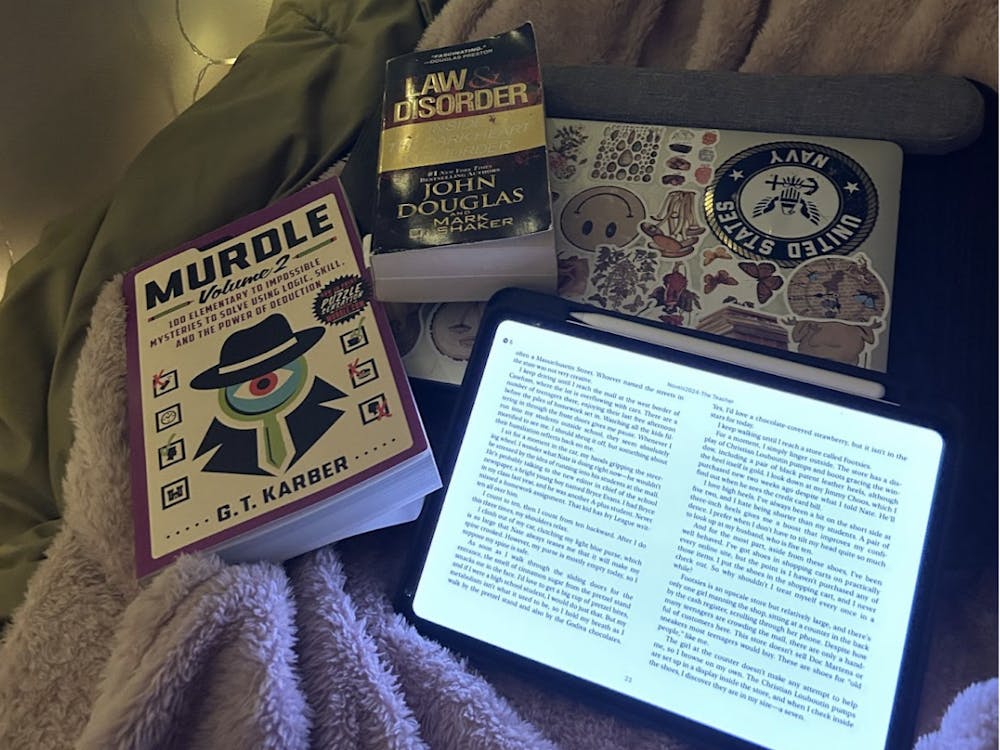This past Alumni Weekend, members of the first full class of female undergraduates were welcomed back to Hopkins to commemorate 50 years since their graduation. Since then, we’ve come a long way on making progress toward gender equity in academics, athletics and campus culture.
As of fall 2022, 55% of Hopkins undergraduates were women, a far cry from the measly 11% of female undergraduates in 1971.
Beyond metrics, Hopkins has devoted its resources to inclusivity both inside and outside the classroom. The University recently announced the creation of the Center for Global Women’s Health and Gender Equity, focused on researching solutions to mitigate gender health disparities. Further, Hopkins has made substantial progress in sports, a historically male dominated field, now boasting 10 women’s teams — notably, the Division I women’s lacrosse team. In 2022, Hopkins Athletics celebrated 50 successful years of women's sports, including ten national championships.
When Hopkins first began admitting female undergraduates, it was met with controversy on campus. Former dean G. Wilson Shaffer stated in 1971, “Hopkins should be for men only. Up to now, I know of no male student who had to interrupt his studies because of pregnancy, menstruation or menopause.” Specifically in the sciences, women reported professors humiliating them by including pictures of naked women in biology slides during labs. Sexist attitudes toward women extended into recreation, too, with female students requiring male supervision to play ping pong.
This is appalling, but unfortunately not surprising.
The decision to admit women to Hopkins wasn’t about women’s rights but was driven by the administration’s concerns over a decline in applications to the University. It is thanks to the female students’ tenacity, rather than support they received from Hopkins, that they were able to thrive here.
This tenacity is perhaps best exemplified by the 1974 commencement speech by Cynthia Young, a member of the first group of undergraduate women to arrive on campus in 1970. Young reflected on how, in just four short years, the female undergraduates at Hopkins were able to accomplish so much, establishing a women’s club, intercollegiate sports and even holding office “in some previously male bastions such as the Newsletter, the debate council, and the Student council.” She also used her speech to emphasize the changes that she wanted to see on campus: namely, that the University recruit more female students and that this changing composition of the student body be reflected in University administration and faculty.
In the half-century since her graduation, a lot has changed. In 2021, the Krieger School of Arts and Sciences had over 100 female tenured or tenure-track professors, compared to the nine in 1972. As mentioned, female student enrollment numbers show that women are now a slight majority in the undergraduate population. There are fewer barriers that prevent women from engaging with important aspects of student life, such as participating in research, clubs and pre-professional societies.
Evidently, in the last 50 years, the talented women at Hopkins have shattered glass ceilings, paving the way for future generations.
Yet, there is still so much progress to be made.
We at The News-Letter are proud to attend a school that offers women equal opportunities and resources as men. But, this is the bare minimum.
Although the gender ratio amongst instructors has become significantly more balanced, tenure-track professorships tend to skew male. Young’s speech emphasized that the faculty composition reflect the changing student body. For female students today aspiring to enter academia, the relatively low number of women in tenure and tenure-track positions may be discouraging.
Notably, the Bloomberg Distinguished Professorships program also reports low female representation, with only 17 out of 54 awards granted to female professors.
Hopkins can and must do better. As new initiatives, such as the Bloomberg School of Government and the Institute for Planetary Health, are announced, The News-Letter calls for their administrations to divert from this trend and prioritize representative faculty bodies.
Women at Hopkins deserve far more equity than can be shown through numbers and statistics. Whether on the field or in the classroom, women should be supported — by each other, by their peers and by their school.





